
The Auto Italia show at Brooklands was a treasure-trove of all things automotive and Italian – the first thing you were greeted at when entering the legendary circuit via the old Campbell Circuit hill was the Abarth stand: snapping scorpion versions of Fiat originals. Carlo Abarth started breathing on Fiats in 1952, so the name has a long and illustrious history of taking Fiat’s most diminutive offerings and turning them into rebodied, tuned-up pocket rockets. The Abarth club’s opening line-up included an 850, 1000, Monomille, a rather special Fiat 600 and a 695 Essesse.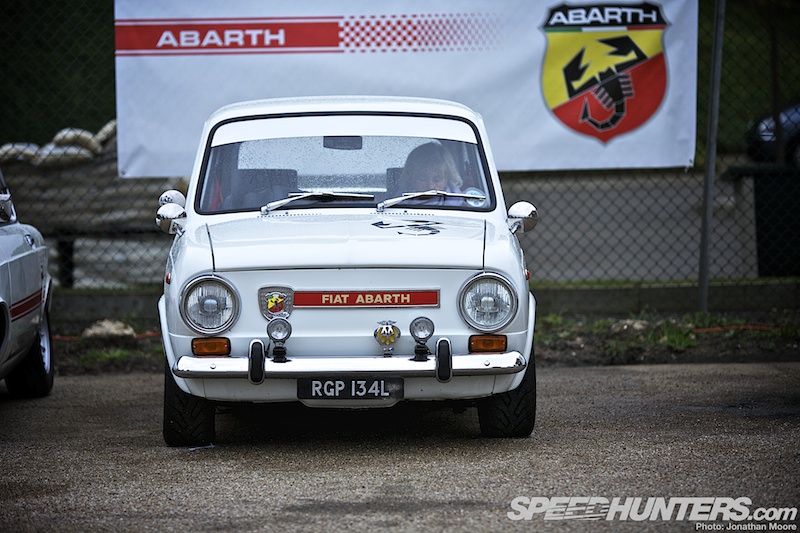
Abarth developed a whole slew of giant-killing cars in the ’60s and ’70s, often with completely inappropriate engines hanging half out of the rear deck (see further down for an example). Here’s a 1972 850 OT.
The company was bought outright by Fiat in 1971, but continued to maintain the tradition of producing hot Fiats through the company’s rallying programmes in the ’70s and ’80s before the brand-name fell out of applied use for over 20 years. In 2007 the Abarth name was brought back for tuned Puntos and is now famous once again thanks to the 500.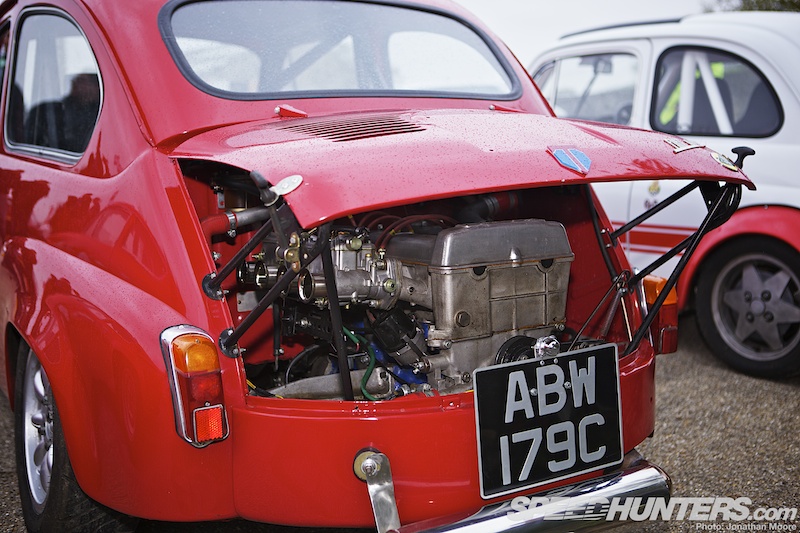
It’s not unusual to shoehorn a larger block into the back of an Abarth, but this Tornado Fiat 600 GT really takes it to extremes as it has a Lotus twin-cam engine squeezed in! Add in some serious negative camber and you’ve got a car that more than lives up to its name.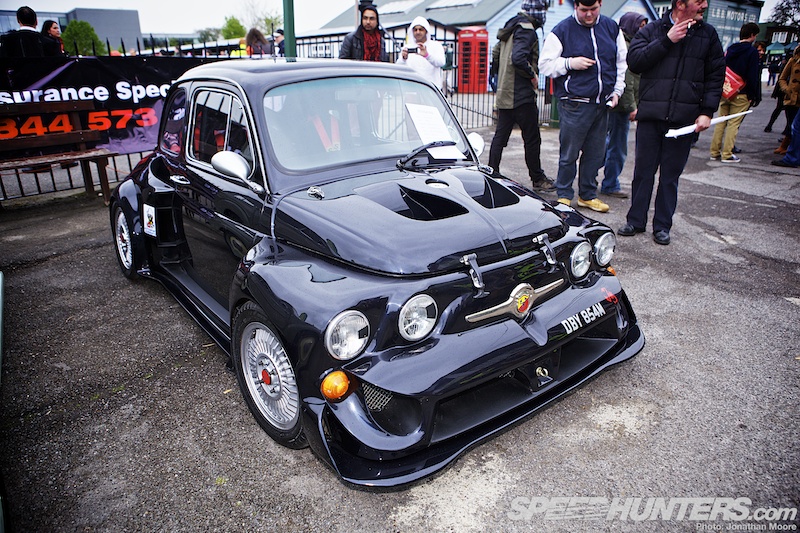
Another miniature giant killer: this is a 1974 Fiat 500L. Sort of. Based on an Osella SP chassis, with double wishbones and disk brakes front and rear, it’s somehow managed to fit an Alfa Romeo 1.5-litre fuel-injected boxer engine and Alfa five-speed gearbox in under its bespoke steel-fabricated body.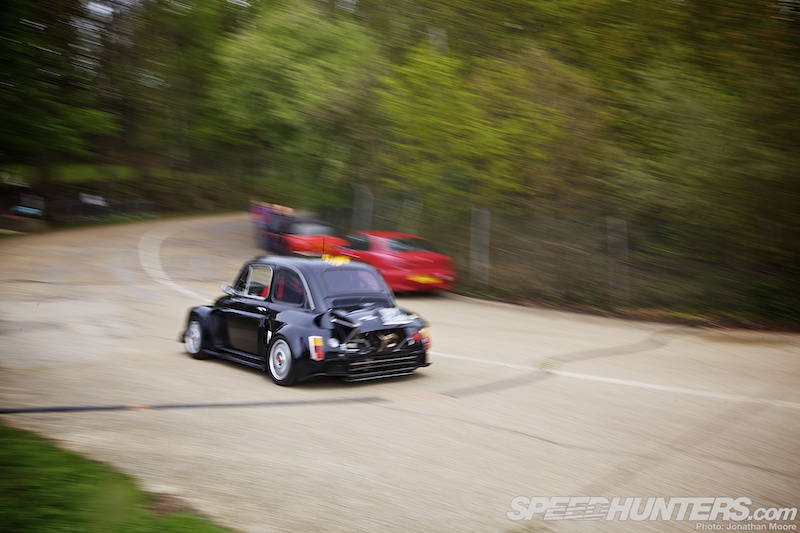
Seeing the little buzz-bomb howl around the site was excellent entertainment; thankfully it wasn’t risked up the test hill with its low splitter.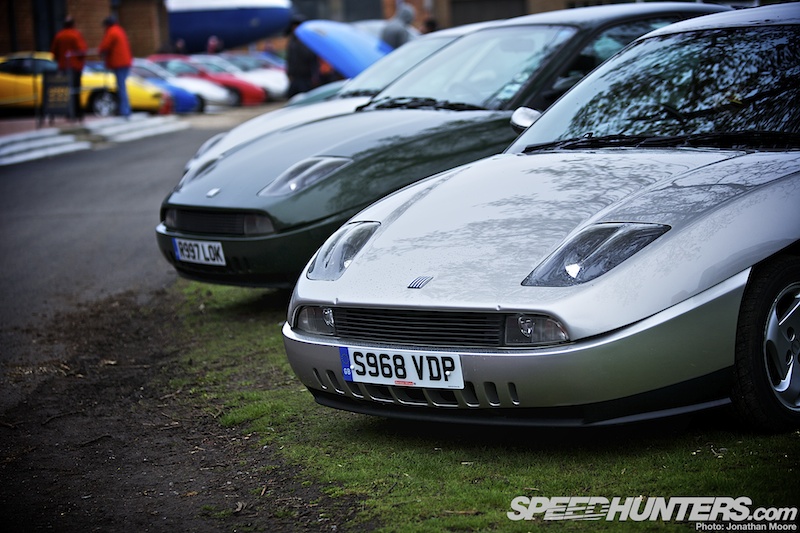
Fiat Coupés are of course ripe for mods, but Auto Italia was more typically populated with very clean and tidy originals, especially with models from the end of the Coupé production run in the late ’90s. Wheels were the most popular exterior changes on show – but that’s not to say that more wasn’t going on underneath the bonnets…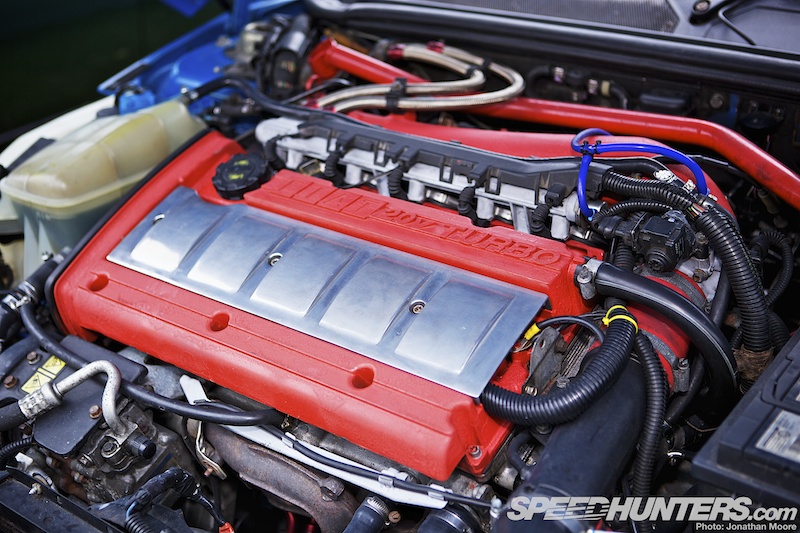
The original 20v, 2-litre turbo was quite handy in basic form, like this very clean example, but a couple of Coupés on display had seen some serious work done to them: the yellow devil in my first story was pushing out 441bhp at a rev-limited 7,800rpm.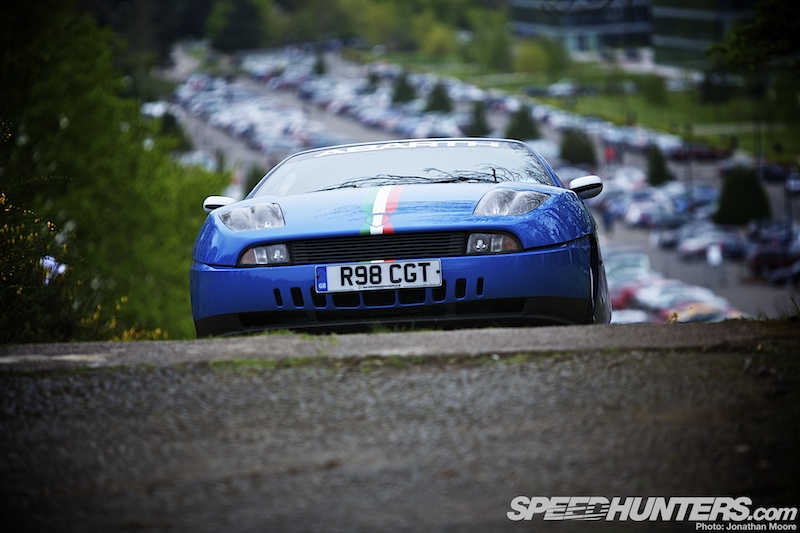
The easiest way to identify the fast Coupés was on the Test Hill: if they were stopping in a hurry at the crest, they’d obviously arrived there quicker than a standard model would!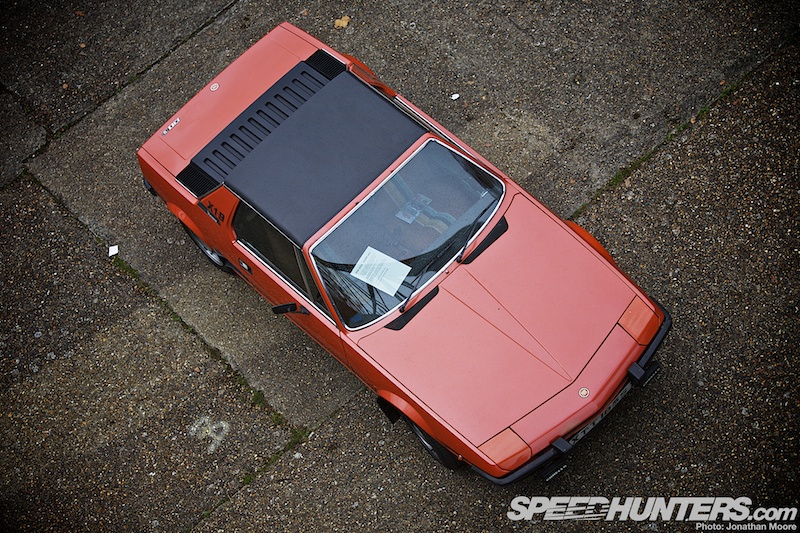
The Italian design studios were well represented across all of the marques at Auto Italia: Pininfarina, Zagato, Giugiaro – and Bertone. The latter firm were responsible for the initial styling of the Fiat X1/9 two-seater, mid-engined sportscar at the beginning of the 1970s, and then took over production of the car during its second decade of production. I hadn’t realised just how long the X1/9 was made for. This low-mileage 1978 model had been rigorously maintained and still had its original luggage set – the only non-standard part was a stainless steel exhaust.
Next to the incredible number of Ferraris, Alfa Romeo seemed to have the largest range of cars on show.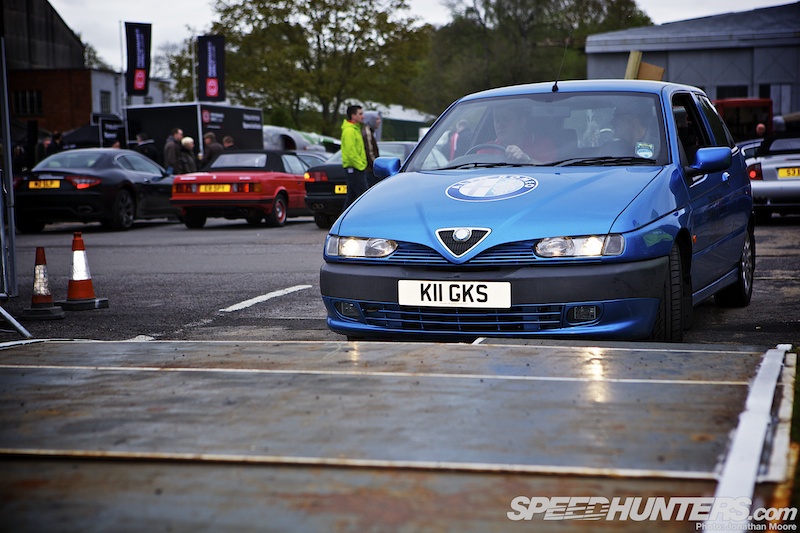
The main problem for the Alfa drivers was getting into their parking area: a makeshift ramp had been constructed over the pavement for cars to get into the Alfa corral, which made life exciting for cars with low splitters…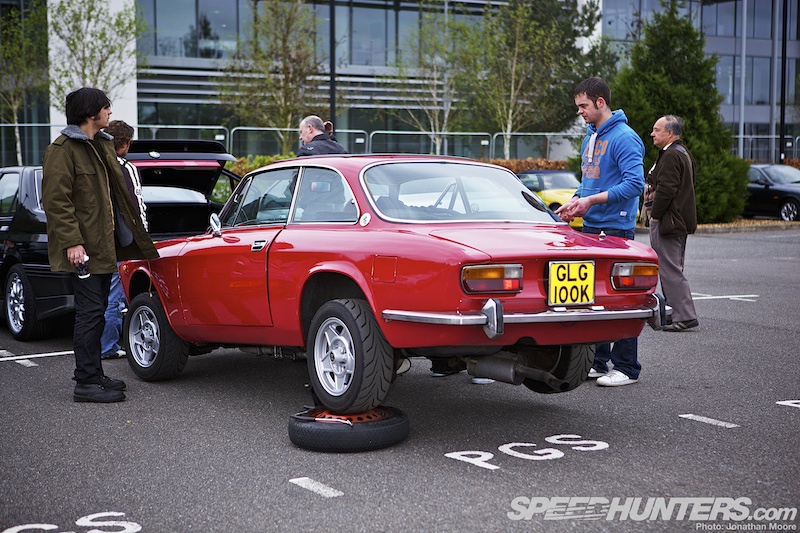
…or exhausts. However, the impromptu repair work required here was carried out in surprisingly good humour, and soon this 2000 was back in one piece.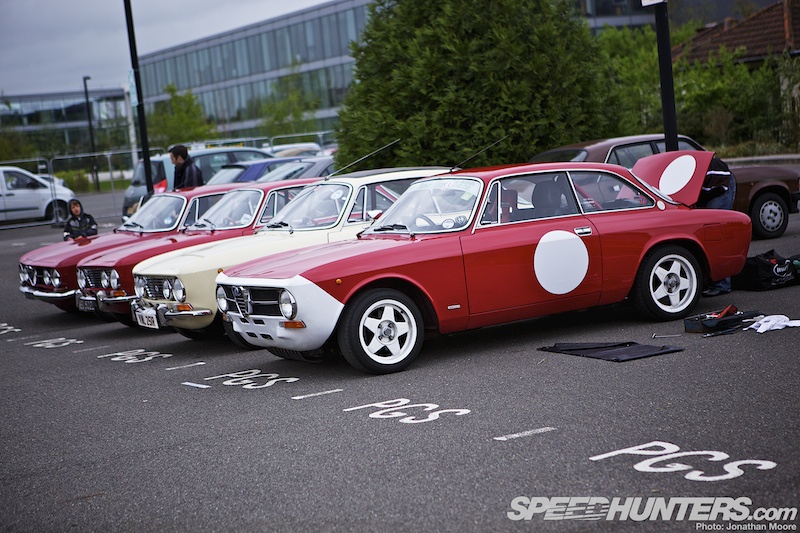
A lovely quartet of GT 1300 Juniors – the base period race livery and five-spoke racing wheels work so well on this shape body, really echoing the old touring cars. I have much want.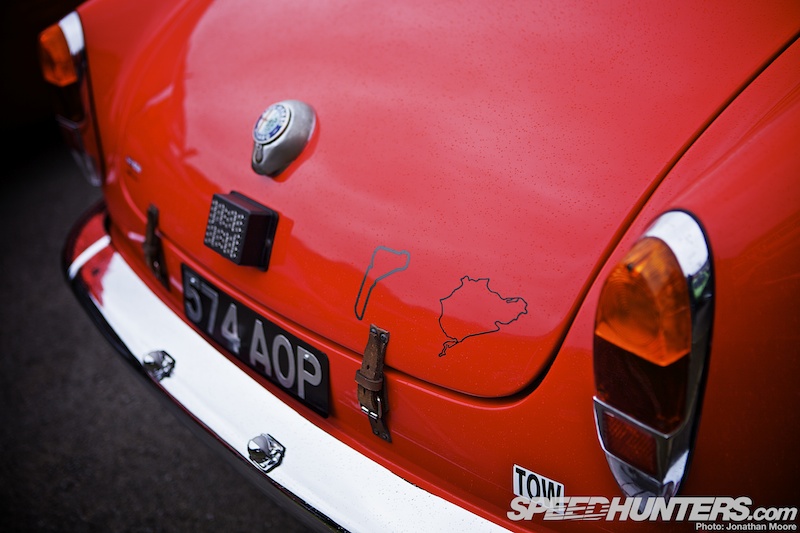
Old or new, all cars deserve to be taken round the Nürburgring – and even better, here we have a Monza sticker as well. Very appropriate for an Alfa.
The Alfa Spider is another car with a very long manufacturing history: production started in 1966 and the last models rolled off the lines 27 years later with a barely changed design. This is a Series 2 from 1975.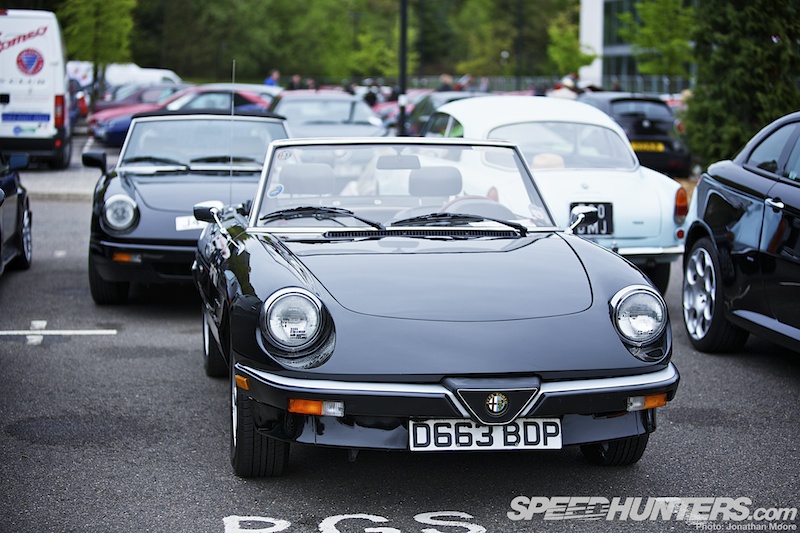
Changes were minor over the years: the iconic long nose merely became slightly more modern-looking, bumpers less chrome and the tail sharper. The Series 3 (this D-reg is from 1986) was followed by a final hurrah at the beginning of the ’90s before the line was replaced by the drop-top version of the modern GTV.
In general the ’70s are seen as a bad period for Italian cars, and from a manufacturing quality point of view that’s hard to argue with. But from a driving point of view? It was glorious. Alfa in particular produced a range of lightweight, compact, sporty cars like this 1982 Sprint Veloce 1.5.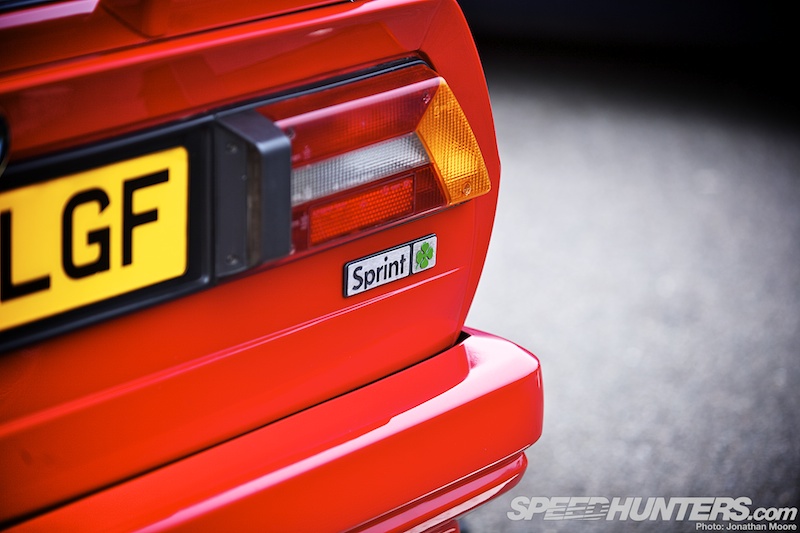
The Sprint was the coupé version of the Alfasud; the Cloverleaf badge denoted that the model had seen the attention of Alfa’s tuning department. The Quadrifoglio icon had been adopted after an Alfa driver in the 1920s had the cloverleaf painted on his car as a sign of luck for the 1923 Targa Florio – and won.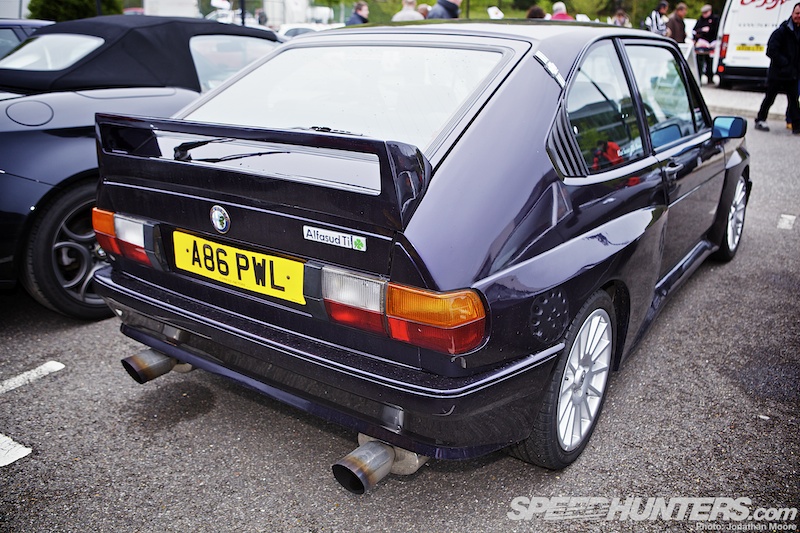
Alfasud was created by Alfa Romeo and Finmeccanica in the south of Italy as a way of bringing industry into a struggling area of the country: the Alfasud was one of the most successful cars Alfa made. This 1983 hatchback Alfasud Ti Cloverleaf has been pumped up with a bodykit and exhaust upgrade.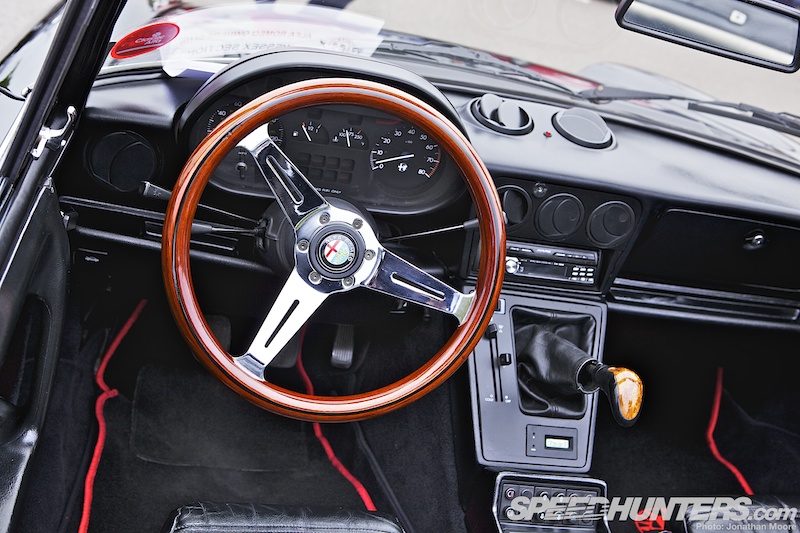
The interior on these cars was always great: simple and stripped back, with a high-mounted gear-stick. The underside wasn’t great: cheap, un-galvanised metal was used that rusted to nothing almost as soon as it saw northern European weather. You had to enjoy them while you could, before the expensive welding bills came in.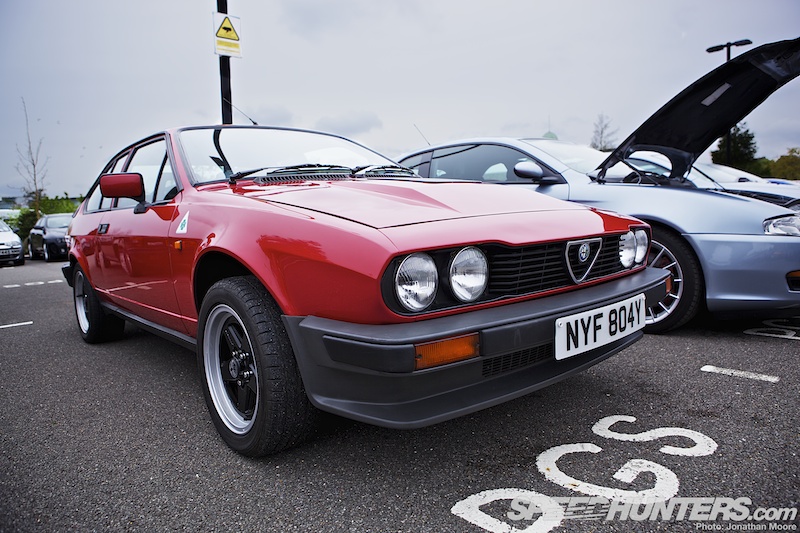
Another Rosso Alfa classic: a V6 2.5-litre GTV6. The bulging-bonneted GTV was a fastback coupé based on the Alfetta saloon, with the engine from Alfa’s then exec-class 6 modified with fuel-injection to produce one of the best-sounding engines of the era, period.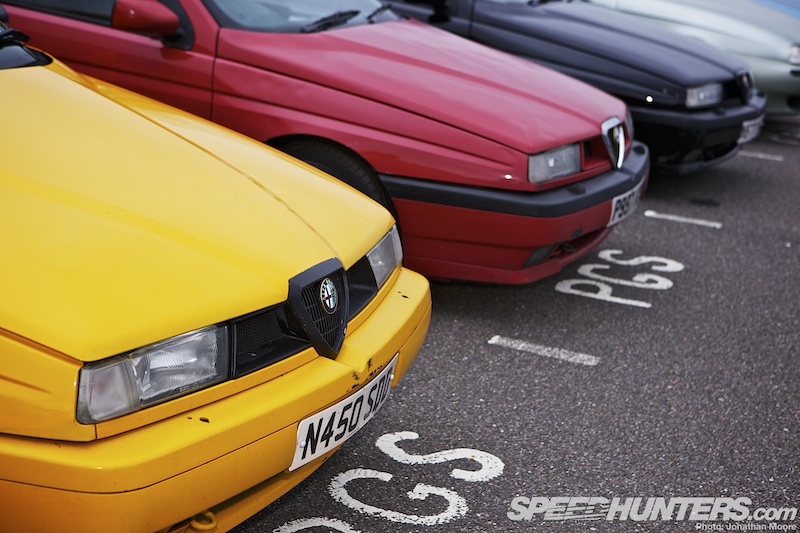
The aero-wedge of the Alfa 155 is still a great look – archetypal of the angled ’90s – and is even made better by wider wheels and lower stances in the style of the touring car and DTM versions it spawned.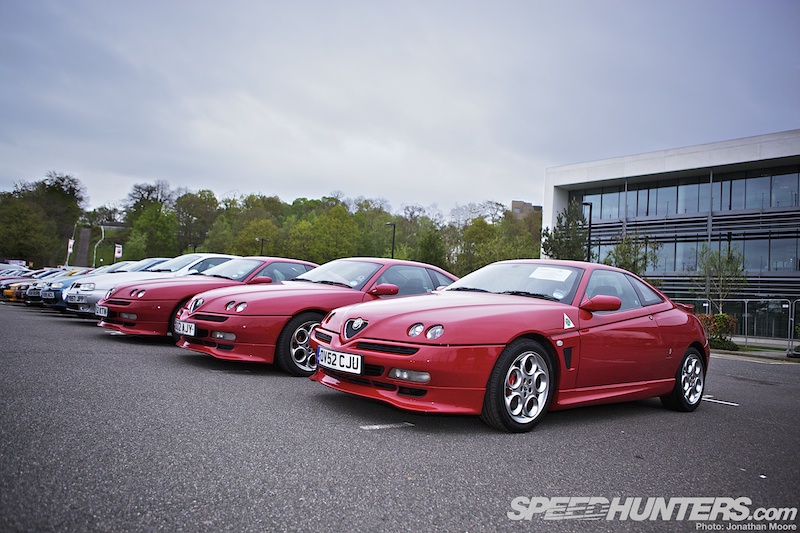
For selfish reasons the Cup is one of my favourite later-generation Alfas. Squat and aggressive, bulked up by the big 17″ telephone dial wheels and body kit, the Cup was used in a one-make racing series in Italy. Less than 500 were made – brothers-in-Cups at Auto Italia referred to each other by their Limited Edition number. I am number 152…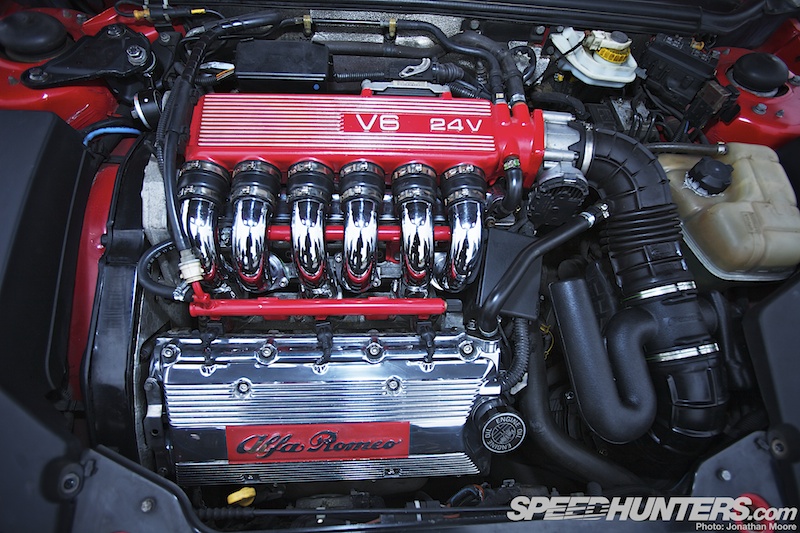
The engine bay of this one left me gasping: the entire unit has been stripped back, cleaned and polished to within an inch of its life. It’s now look as good as it sounds. If only my one was a quarter as shiny…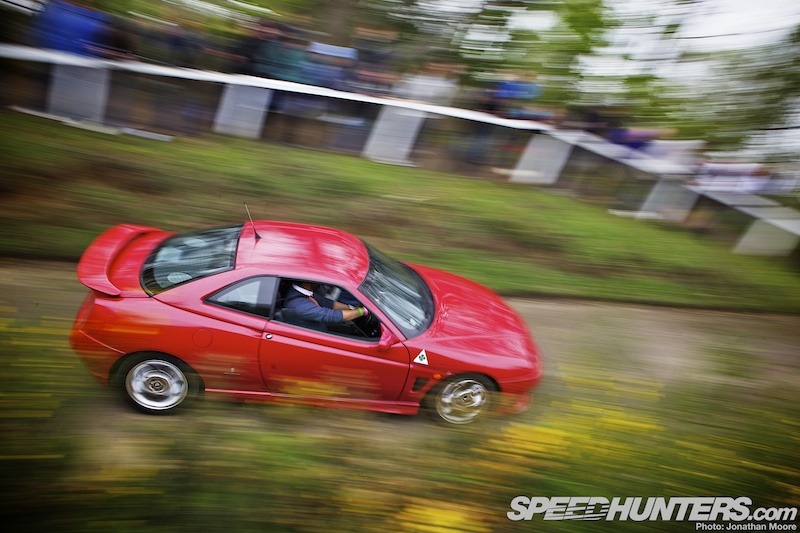
Another Cup took to the Test Hill in tyre-smoking style later in the day, showing that either I’m not pushing my car hard enough or he had something special under the bonnet…
I’m leaving the earlier, more exotic Maseratis to another story, but here are a pair of ’80s examples: a 1987 Maserati Biturbo Spyder (built by Zagato)…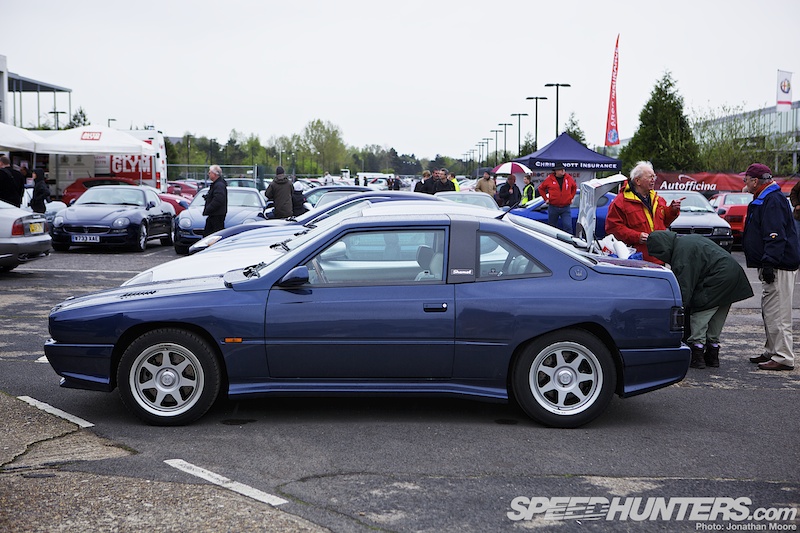
…and its successor, the Maserati Shamal Superleggara from ’93. The designer of the Shamal, Marcello Gandini, was also responsible for the Lamborghini Miura and Countach. The Shamal has a 3.2-litre, twin-turbo V8 and a 0-60mph of just over five seconds; less than 400 were built, so they’re a rare sight.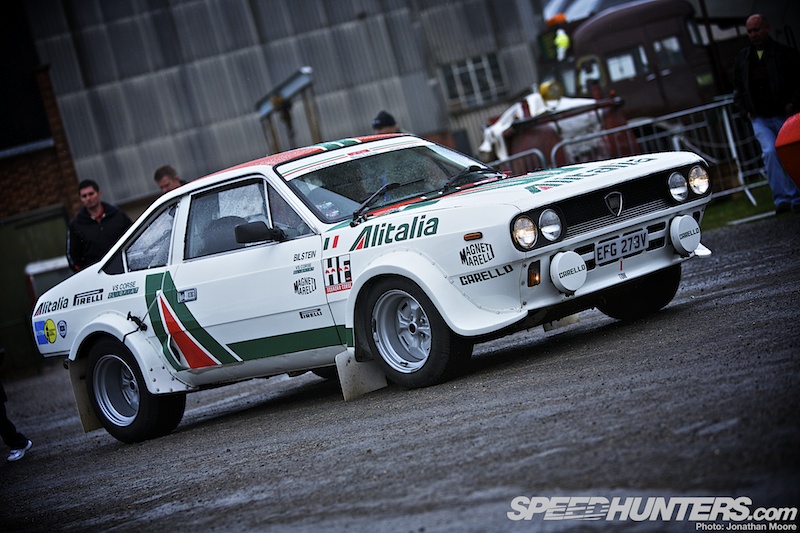
Now over to Lancia. A company who are currently punting out particularly ugly superminis and MPVs, but who have such a legacy they could be mining… Just look at this Lancia Beta S2, decked out in glorious Alitialia Group 4 rally livery.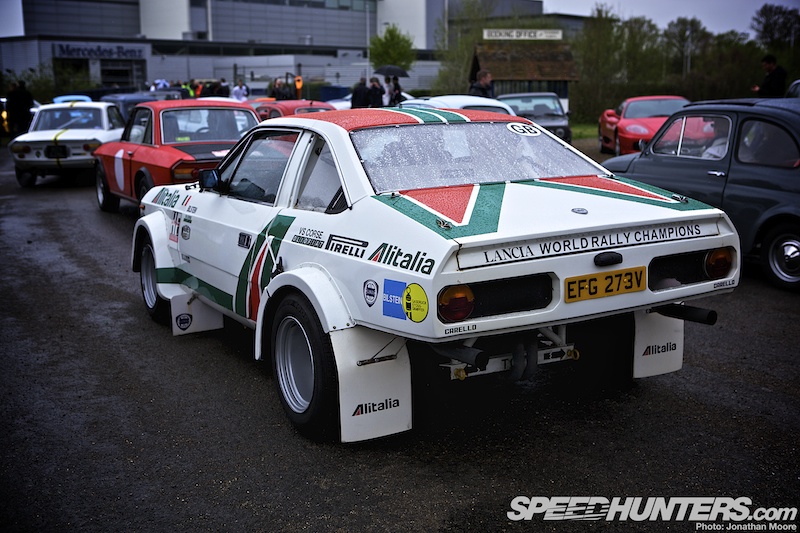
Surely this would make one hell of a drift car?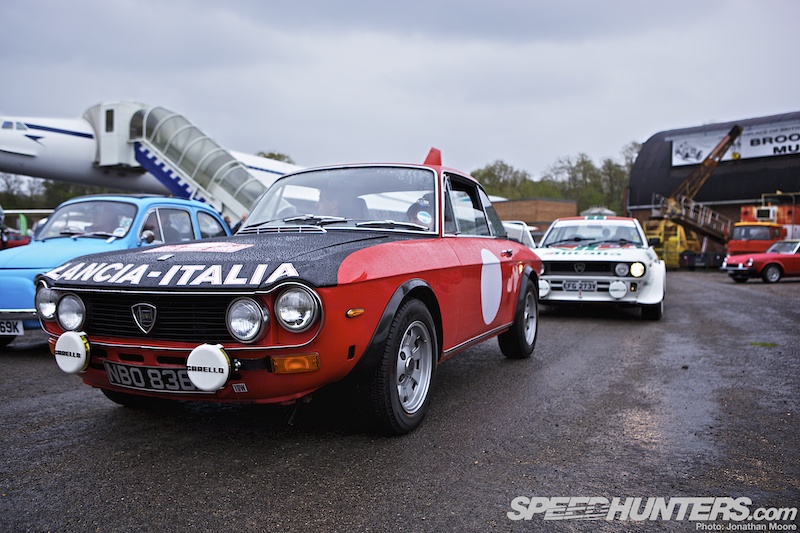
This Lancia Fulvia Coupé was another car decked out in period rally livery: a Fulvia won the International Rally Championship for Manufacturers in 1972…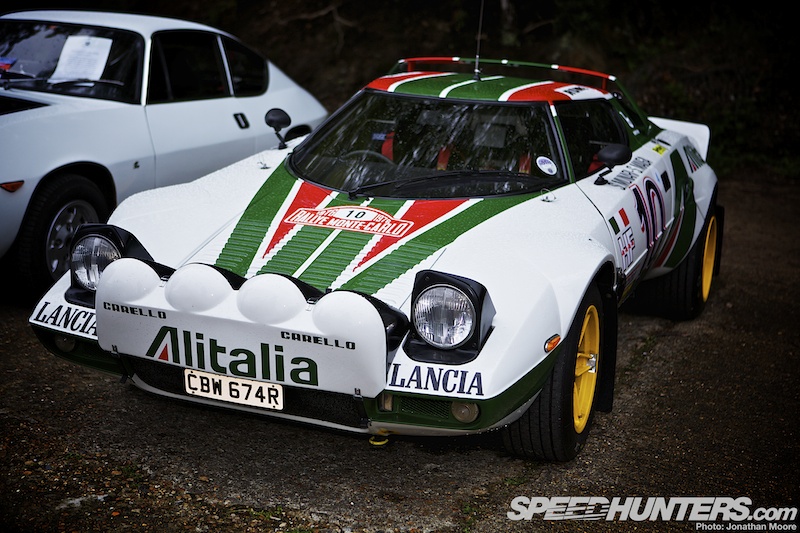
…though the rallying Lancias of the ’80s-’90s are perhaps best known: particularly the Integrale, 037 and Stratos HF. The Hawk recreation of the Stratos is an affordable way to experience this legendary car: 3-litre Alfa engines normally replace the original Ferrari V6.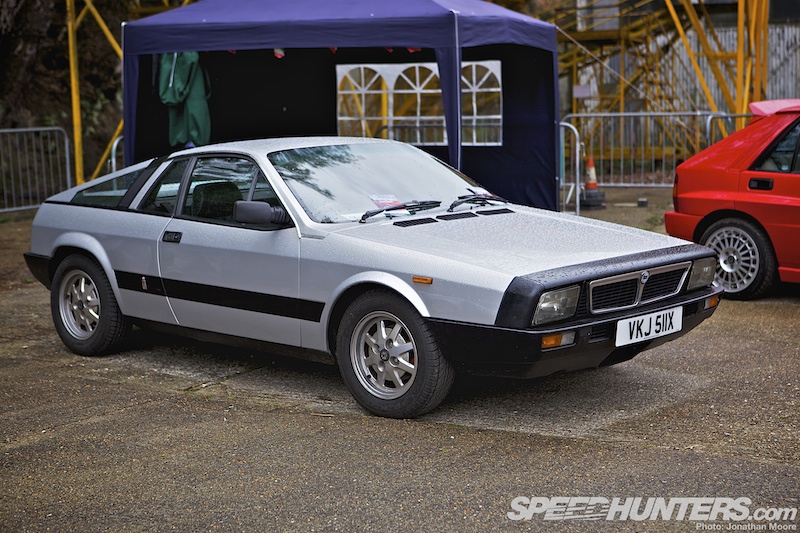
Aping the long nose/raked rear of some of its more exotic Italian supercar contemporaries, the rear-wheel-drive Beta Montecarlo coupé was designed by Pininfarina. It’s difficult to talk about the Beta without mentioning the R word: rust destroyed Lancia’s reputation in the ’80s as quickly as it did the cars themselves, ruining a car that had seen great reviews for its handling… Which is why it’s so nice to see an example in such good condition.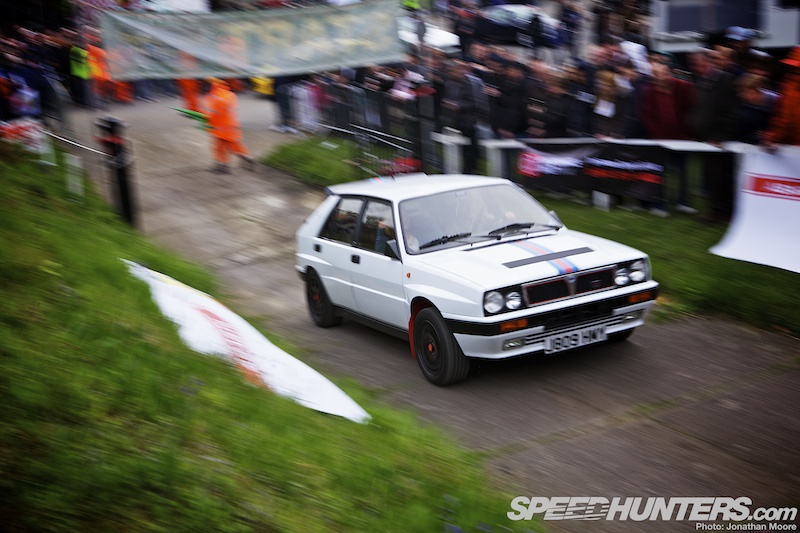
Better reputations were built with the Delta of course, especially in Integrale guise. This turbocharged 16v Integrale is still a classic today – the Impreza of its time. I’ll say nothing about the current iteration of the Delta…
Jonathan Moore






Anything else on that 1974 Fiat 500L? I'd love to see a feature or spotlight with specs on that lil thing
"Surely this would make one hell of a drift car?" -I wouldn't let anyone use that in a drift competition... Why? You just don't use a rally car ONLY for drifting,. Drifting is cool-in itself, but it just lacks some sense of purpose, somehow rallying has that... In rallying you go sideways because it's more efficient(prove me wrong!)
italian blood... de las mejores!
@BigLips yaeh i would like too aswell. savage post
no one type of auto racing has a purpose better than the other, its all the same, drag, rally, drift, none more important than the other...its open to anyones fancy!
Man, to much fun from the 80's in this post, love it!
fun fact : Herbie felt in love with the Lancia Beta Monte Carlo in one of its adventures ^^
@Roulianely I remember that, then I wanted one as a teen so bad, but none in Florida in the 80's.
@KAG Me too !! I thought it looked so cool ^^
Unless that particular Beta Coupé has been extremely heavily modified then it would make for an absolutely awful drift car considering that Betas are FRONT wheel drive...
@illuminati Isn't it the Beta FF anyways?
Nothing like the sound of an italian V6. I do still miss my 156 2.5... but it was front wheel drive... so i was able to get over it
So you're saying if that thing was blasting around some cones in an exhibition run, you wouldn't watch because it would offend you as a purist? Man would you hate Goodwood. (still, it probably would be a shite drift car since the engine is in the trunk)
We want wallpapers, a lot of them !!!!
@GeoKan Yes! Particularly of that 500L. So sexy.
Forza Italia! Forza Alfa Romeo! AROCKV Malaysia Celebrates Alfa Romeo 155 20th Anniversary.
http://www.trafficmagonline.com/twentieth-anniversary-of-the-alfa-romeo-155/